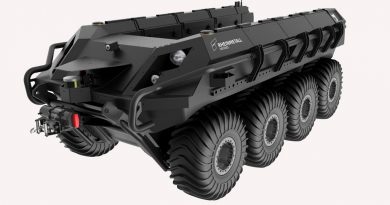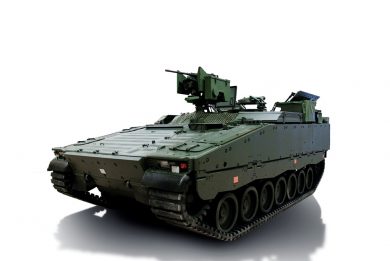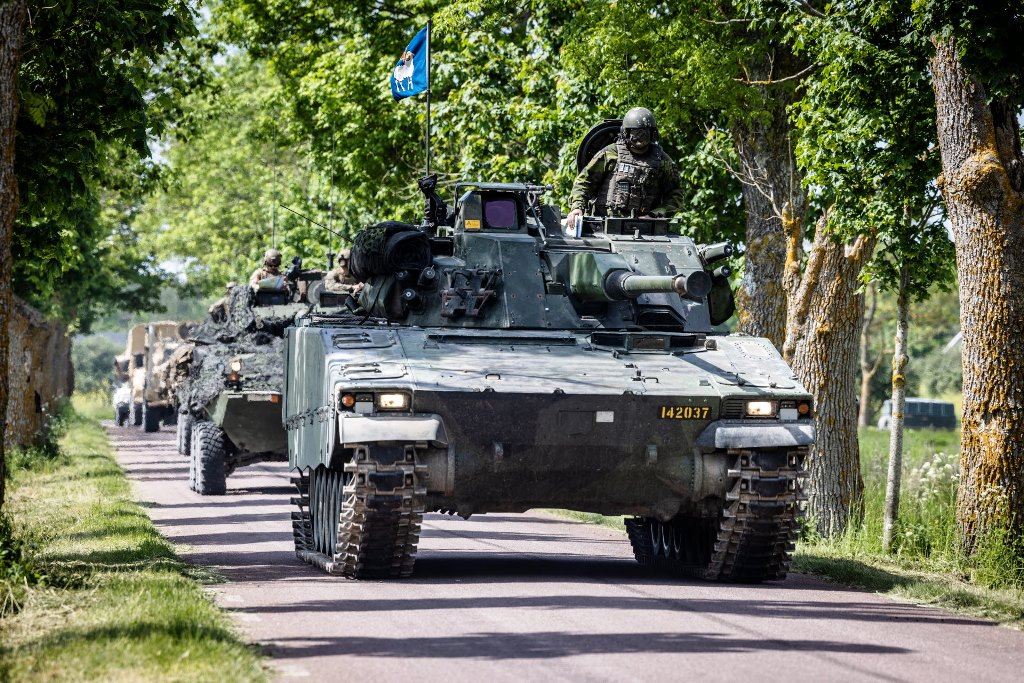
IAV conference: Sweden, Army growth and CV90 new generation
“Now it’s Army times,” Maj.Gen. Karl Engelbrektson, Commander Swedish Army, told the audience gathered in the Live Room ad Twickenham Stadium on January 24th, on Day Two of the International Armoured Vehicles conference, IAV conference in short, organised by Defence iQ.
Sweden decided to boost its land defence component since 2016, giving up the structure mostly based on peacetime training and force generation logic, which gathered similar units in a single location to ease training and logistics, for a new structure that sees brigades deployed “in order to be able to quickly take up the fight in the most important regions with a combined arms brigade,” Maj.Gen. Engelbrektson explained.
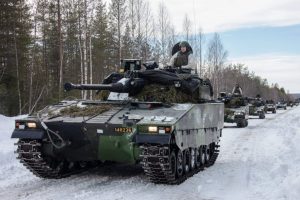
In recent times the defence budget saw a considerable increase; “Since two years I have 250% more budget than I had in the past, and the task is basically to double the Army which is a challenge in itself,” the Swedish Army Commander said. The general situation was pretty clear even before February 2022, and this led the Swedish authorities to exceed what was contained in the Försvarsberedningen 2021-2025, the Total Defence 2021-2025 document. “When we did our last Swedish defence review the motto for the Army was ‘three plus two plus one’, three brigades, two battlegroups and one division, and for the first time in history the Parliament came back saying ‘that’s not enough, you need at least four brigades’,” Maj.Gen. Engelbrektson stated, adding that “two of those brigades will have an expeditionary capacity, which means we will have to keep them at higher readiness and also have a few more professional soldiers,” specifying that this doesn’t mean that Sweden intends to abandon conscription.
The current situation impacted the Swedish defence acting as an accelerator; “What the Ukraine war did was to move everything to the left, as we now have more money and we have it quicker. Originally the plan had to start in 2030 and beyond, but now all has been moved to the left by around eight years,” the Commander said.
This not only applies to the force structure but also to weapon systems, and more precisely to armoured vehicles. “The Parliament also told us we need to replace the current vehicle’s fleet including infantry fighting vehicles and tanks,” Maj.Gen. Engelbrektson said.
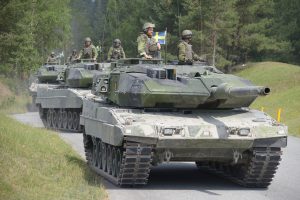
Recently Sweden became part of the Common Armoured Vehicles System (CAVS) programme, together with Finland and Latvia, based on the new Patria 6×6 armoured personnel carrier, which will equip some of the new brigades, however its main combat assets remain the Leopard 2 main battle tank, Stridsvagn 122 for the Swedish Army, and the CV90 infantry fighting vehicle.
“The CV90 is the platform we are investing in and we are happy to remain with it, but we need to invest for the future. We will need a multi-domain platform both on the low and the high tactical level,” the Commander said, specifying that this capability will have to be integrated on new platforms as well as on existing ones. As an example, the CV90 will be capable to be linked to UGVs used in combat, combat support and combat service support domains, as well as with UAS of different types, including loitering munitions. “A modern and digitised land platform must also be connected to long range fires, combat aircraft, reconnaissance UAS, and even naval assets, as the Swedish Army is often called to operate in coastal areas,” the General underlined.
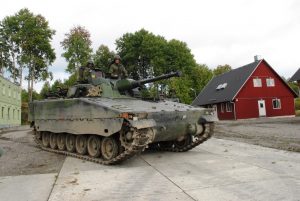
Camouflage and deception, Saab is definitely a key player in this field, as well as the control of electromagnetic signature are key points not only for the CV90, according to Maj.Gen. Engelbrektson, “these high-tech spectrum force enablers and we need to be much better on that.” .
Other key elements will be the C4ISR capacity, as well as training and simulation. “We also think we need to include antitank capabilities into the platforms, adding to direct fires shaped charges effectors, and all the aforementioned capabilities must be integrated since the very early phases of the platform design.”
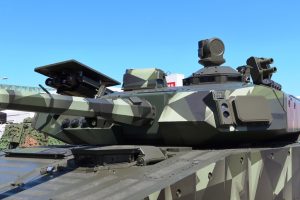
In his position as Army Commander, Maj.Gen. Engelbrektson is responsible for operational specifications, while experts from industry and the procurement agency transform these into technical requirements. “We should not overspecify in order to save time,” and probably money, he also stated.
Citing speed and manoeuvrability as key requirements for the new infantry fighting vehicle, followed by survivability, lethality, sustainability and interoperability, the Swedish Army Commander provided first hints on what the future vehicle, that will inherit the experience made with the CV90, might be.
Referring to the SEP modular armoured vehicle (Splitterskyddad EnhetsPlattform, Swedish for Fragmentation Protected Standard Platform), the hybrid diesel-electric powered tracked and wheeled platforms developed by BAE Systems Hägglunds AB which prototypes were unveiled in the mid-2000s, the Commander said “Two decades ago Sweden developed prototypes of a diesel-electric armoured vehicle, but it was probably too early for such a proposal. Now we are back on track and we are developing a hybrid electric chassis for the CV90 it will be seen soon.” EDR On-Line understood that the prototype will feature a new chassis, designed with considerable growth potential to allow upgraded in the decades to come, while the turret will also be new, albeit heavily based on the D-Turret, the digital turret that formed the basis for the upgraded Dutch Army version and others. “We are building a few CV90 demonstrators as we need them to learn which will be the high-tech platform effects and capabilities, in order to draft requirements on that base,” the Swedish Army Commander underlined, adding that to this end these are being fielded as quickly as possible. He also made clear that no agreements has been made between the industry and FMV, the Swedish Defence Materiel Administration.
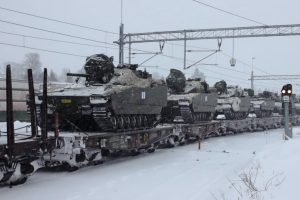
Some of the elder CV90s will be striped of their combat elements and their chassis will be re-used to generate support vehicles, a the new division level HQ will need divisional level support elements. In that sense Maj.Gen. Engelbrektson made it clear that, “We should not present the Army as a flat envelope on the ground,” the service being able to generate Anti Access/Area Denial bubbles in the areas of operation. Keeping in-service tracked platforms of two different generations will obviously generate logistic issues. “We need instead to have a constant renewing Army, which means that we will have to fight with different sets of systems. It is not easy but we don’t have to budget to renew all at the same time,” the Service Commander concluded.
Currently 1,470 CV90s have been produced or are on order, those already in service endured 70,000 combat days and travelled 10.5 million kilometres. The BAE Systems Hägglunds IFV is in its fifth generation and is in service with seven nations, five of which belonging to NATO, 16 variants having been developed, the company having invested 6 million R&D hours in this project. While EDR On-Line understood that the Gotland event in May where the vehicles may be in place will remain a closed opportunity for top rank officers of the CV90 users club, when will we be able to have a first look at what should become the successor of the current CV90? DSEI 2023 coming September? Maybe!
Photos courtesy Swedish Armed Forces, US Army and P. Valpolini
The International Armoured Vehicles conference takes place under the Chatham House Rule. Publication of this article was authorized by the speaker.

